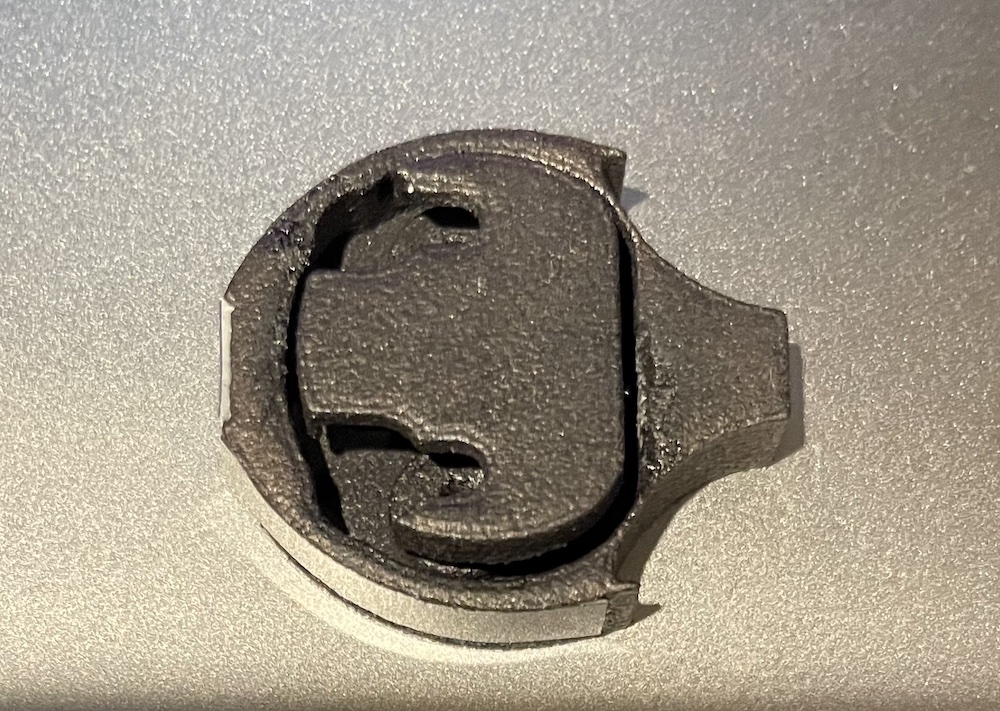Funk Firm's Houdini Cartridge Decoupler
Is it a worthwhile "tweak" for your tonearm?
"The last thing I'd want to do is decouple my cartridge from the tonearm's headshell!", I barked at Funk Firm's Arthur Khoubessarian (BSc physics, University of Surrey) at last Spring's High End Munich show as he attempted to introduce me to the Houdini cartridge de-coupler. Everything I've learned and been taught by my mentors is that headshell/cartridge coupling is essential for efficient energy transfer; the goal being to drain it from the system and not allow it to hang around and muddy the sonic waters. Many cartridge manufacturers agree. Some do it by putting protruding ridges atop the cartridge body to minimize and concentrate the contact area.
Arthur responded (and I paraphrase), "Sure, on your expensive SAT tonearm", but, pointing to graphs on the booth wall showing some nasty low frequency resonant behavior he's measured on some very well-respected tonearms, he said, "Look how these arms resonate! Why would you want to inject that into the cartridge by tightly coupling it to the arm? What you want to do is isolate the cartridge from it and that's what the Houdini does. Try it on a less costly tonearm."
So, skepticism partially in check, I got a review sample of the $350 Houdini and gave it a try on the recently reviewed Pro-Ject X80's EVO 9CC carbon fiber arm. The carbon fiber arm is definitely stiff, but that doesn't mean it is free of low frequency resonances, or given its stiffness and relatively light weight, high frequency ones (unfortunately I don't have the means to measure this). On the wall Khoubessarian showed resonance graphs of some very well known arms. I think you can see them in the Munich coverage video on my "previous endeavor"'s YouTube channel.
An unmoored but decoupled cartridge would be both free of the arm's resonant behavior and free to shake, rattle and roll, which is the last thing you'd want a cartridge to be doing. Khoubessarian claims he's invented a system that allows the device to "move in all directions apart from forward and back". I'm not sure why you'd want to allow movement in any direction, but I installed on it the Luxman LMC-5 anyway, but not before recording "Teach Me Tonight" and "Cry Me a River" from the double 45rpm Analogue Productions reissue of The Ray Brown Trio's Soular Energy (APJ 268-45)—a record with a great deal of low bass energy— with the cartridge directly coupled to the headshell.

Houdini bottom (BTW: though in the photo it looks like styrofoam, it's not!
I'm not going to go into all of the install details other than to say that you install cartridge screws part way down and slip on the Houdini, after which from the top you gain access to the screw heads and snug them down to create a secure cartridge carrier. Then, using supplied easily clipped fiber screws that you cut to size, you secure the device to the headshell . Since the cartridge is decoupled, the screw material should have no sonic effects.
The resulting sandwich looks like this:

Now, after resetting tracking force and adjusting overhang, you have to compensate for the front of the arm height rise by raising up the back of the arm. If you can adjust VTA you are okay. If you have a Rega or another arm that doesn't allow for VTA changes, you can add convenient shims sold by Funk Firm and others that don't require you to remove the arm to add washers. There are Houdini versions for both threaded and "through-hole" cartridges. If you like what Houdini does and go from threaded to "through-hole" you'll need to buy a second Houdini.
The two files were definitely different, particularly the presentation of Ray Brown's bass. The non-Houdini was fuller and more prominent with a longer sustain. The "Houdini processed" file sounded "faster" on bottom and as expected, somewhat leaner. You'd immediately hear it, especially in a full or near full range system (but otherwise too). Which is "correct"? The de-coupling skeptics would say "of course the Houdini one was leaner! All that jiggling." The de-coupling believers will say "Of course the de-coupled one was faster and leaner! You've eliminated or at least diminished the arm's resonant behavior to imprint itself into the cartridge."
I didn't hear profound or easily identifiable sonic differences in other areas like image focus and soundstaging, which could either be a compliment to the 9CC EVO arm or a criticism of me. Maybe the Houdini behaves differently with different cartridges. I also didn't hear brightness produced by a high frequency resonance. I didn't try other cartridges because I think after reading this much you'd know if it was something that might interest you enough to buy and try. It's effect is easily audible. They should sell it with a money-back guarantee.*
In an email after reading the review Mr. Khoubessarian wrote that the Houdini has come with a "money back guarantee INCLUDING POSTAGE" (his emphasis, note mine). I returned to his website but couldn't find that, nor was it on the MusicDirect.com website. But good to know there is one. You can try and get your money back if it doesn't work for you.










































.png)








